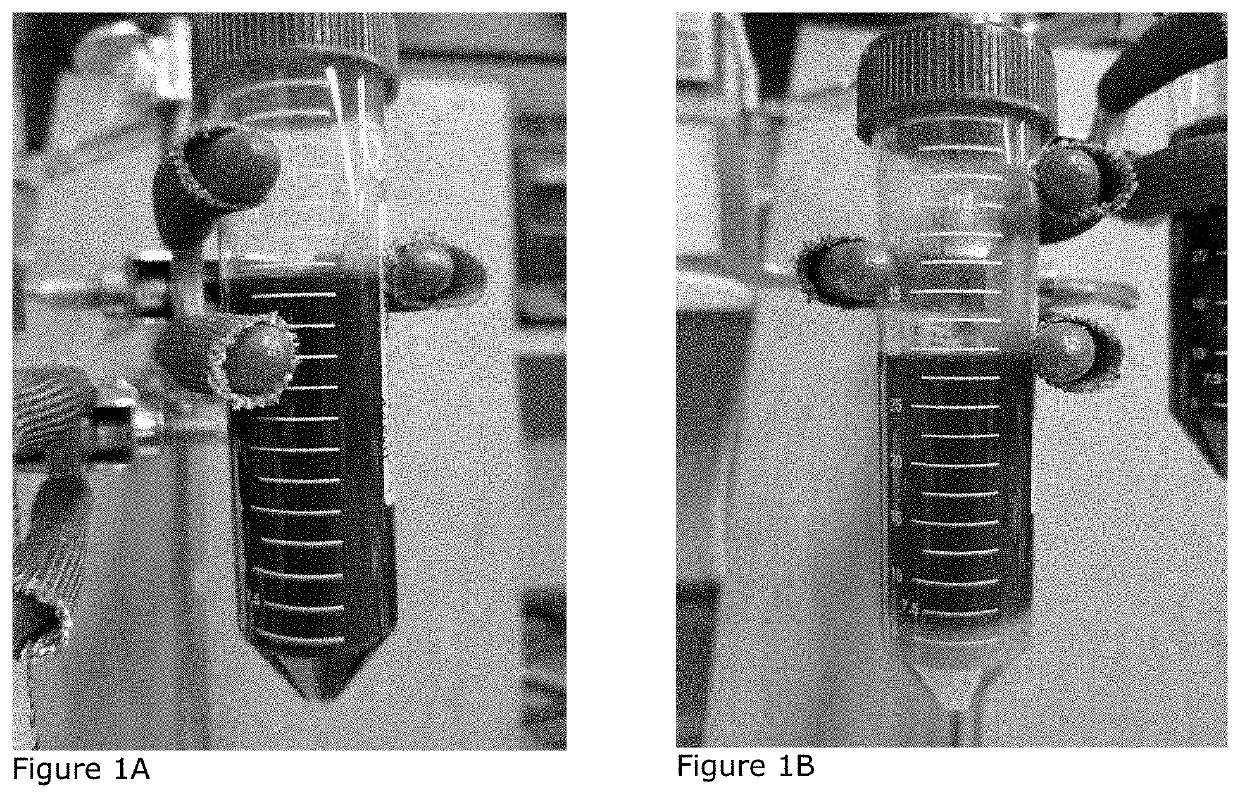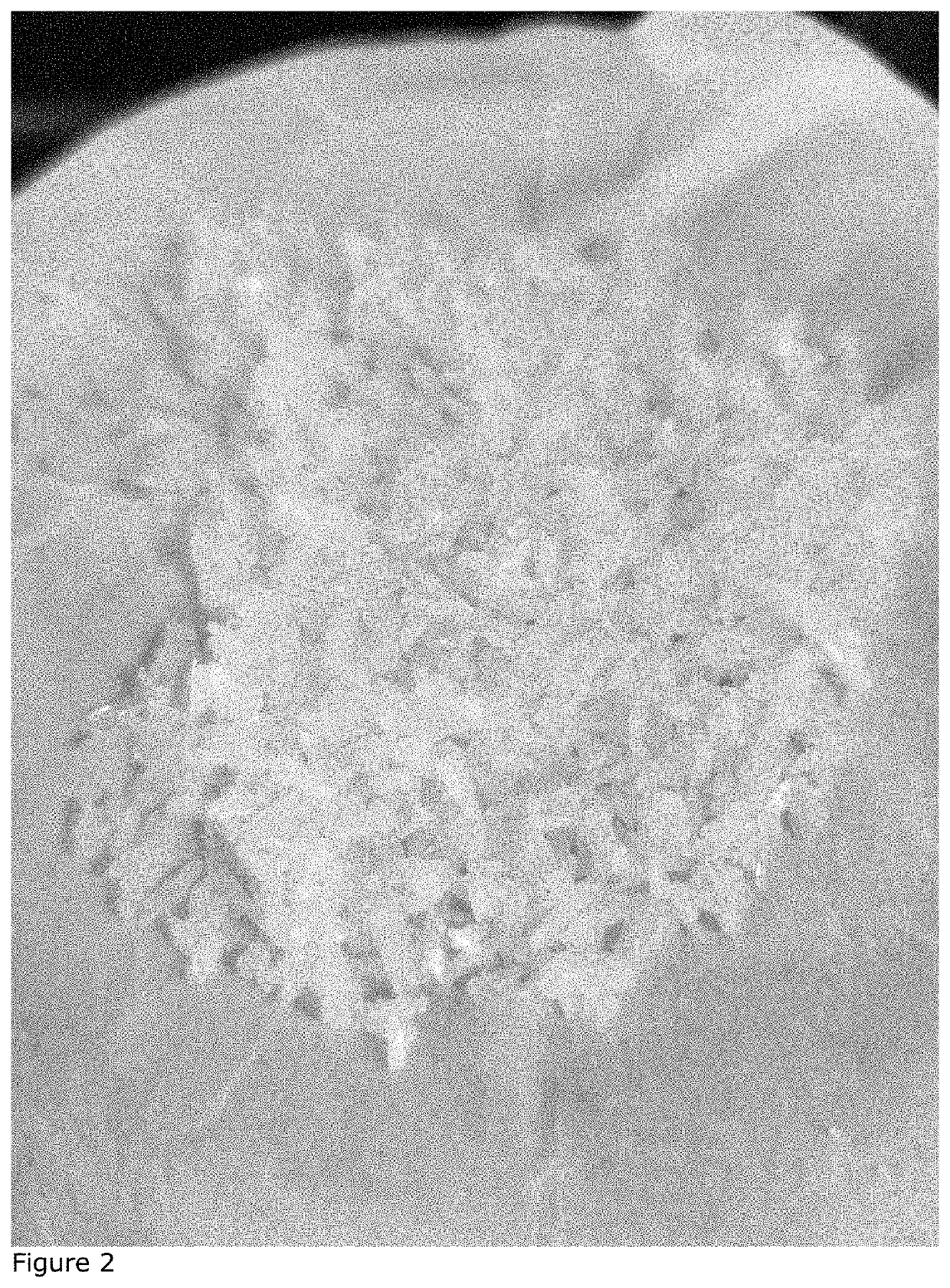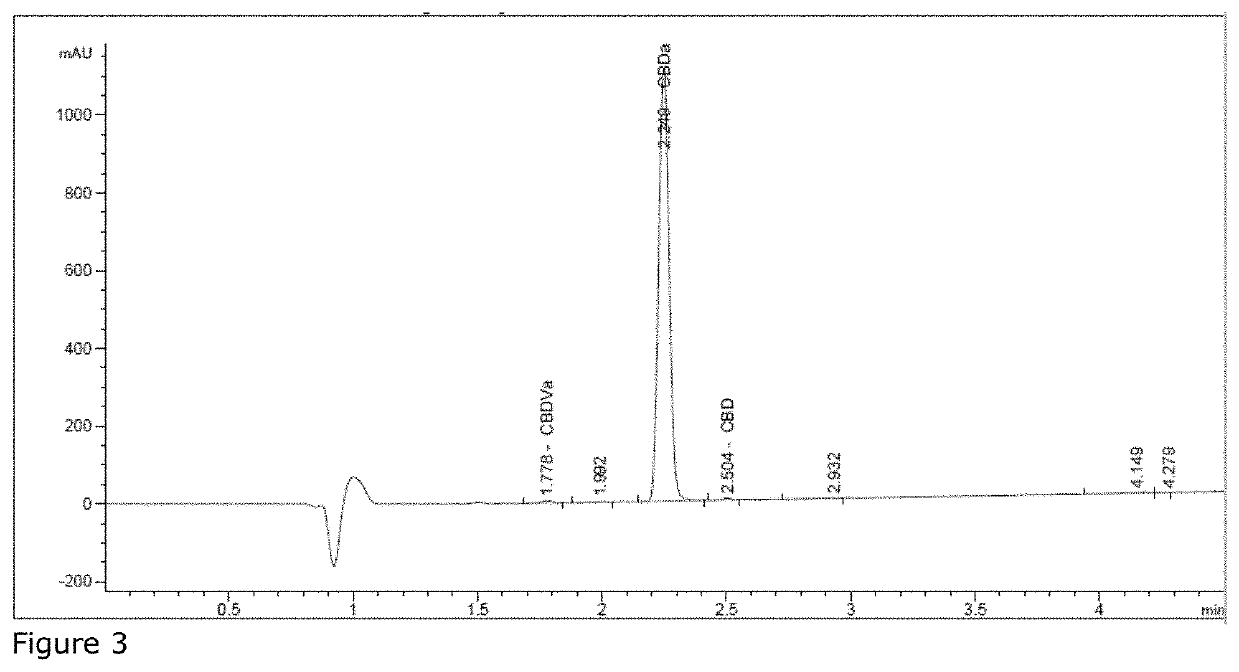Method for selective separation, isolation and recovery of cannabidiol and cannabidiol-like meroterpene acids from complex matrices
- Summary
- Abstract
- Description
- Claims
- Application Information
AI Technical Summary
Benefits of technology
Problems solved by technology
Method used
Image
Examples
example 3
ecomposition-Decarboxylation of Cannabinoid Acid Amine Salt
[0060]The CBDa:triethylamine salt from Examples 1 or 2 was heated to molten state at the gram scale; melting began at 145 degrees Celsius, and was held at 155 degrees Celsius, under vacuum for one trial and a sweep of Argon gas for the other. The heating caused the triethylamine portion of the salt to be evolved as a vapor, which could be separately condensed and recovered for reuse if desired. The heating also caused carbon dioxide to be liberated from the cannabinoid acid through decarboxylation. Upon cooling, the neutral cannabinoid exhibited as a clear, highly viscous liquid with the gradual purple tinting of the CBD melt attributed to the formation of the CBD hydroxyquinone.
example 4
of Pure, Crystalized CBD
[0061]The liquid resultant from Example 3 was allowed to cool under vacuum, leaving a semi-liquid CBD resin (FIG. 5). This resin was induced to crystallize, by introduction of a small CBD seed crystal and yielded 3.2 g of CBD crystal having a purity of 99.7%. Photographs of the resultant crystals were shown in FIG. 6, with their HPLC analysis shown in FIG. 7. To note, amorphous solidification of the melt will occur spontaneously on its own with a delayed onset.
example 5
tra and TGA-DSC Thermograms of Crystalline CBDa Complex
[0062]The meroterpene complex of the present invention was further characterized by recording the FTIR spectrum (FIG. 8). This methodology can be used as a means of identification and fingerprinting. TGA-DSC analysis is referenced in FIG. 9. The TGA-DSC analysis of the complex showed an endothermic event with its maximum at 144.5° C.; a second event to note occurring between 160-200° C., where the heat flow is constant spanning the heating of the melt. DTG analysis (FIG. 10.) showed the highest rate of 0.85 mg / min occurring at a temperature of 144.5° C. complimenting the endothermic event characterized as the simultaneous decomposition-decarboxylation of the CBDa:NEt3 complex into gaseous CO2, NEt3 and molten neutral CBD.
PUM
| Property | Measurement | Unit |
|---|---|---|
| Temperature | aaaaa | aaaaa |
| Structure | aaaaa | aaaaa |
| Stiffness | aaaaa | aaaaa |
Abstract
Description
Claims
Application Information
 Login to View More
Login to View More - R&D
- Intellectual Property
- Life Sciences
- Materials
- Tech Scout
- Unparalleled Data Quality
- Higher Quality Content
- 60% Fewer Hallucinations
Browse by: Latest US Patents, China's latest patents, Technical Efficacy Thesaurus, Application Domain, Technology Topic, Popular Technical Reports.
© 2025 PatSnap. All rights reserved.Legal|Privacy policy|Modern Slavery Act Transparency Statement|Sitemap|About US| Contact US: help@patsnap.com



